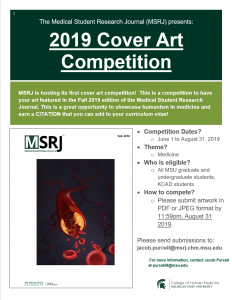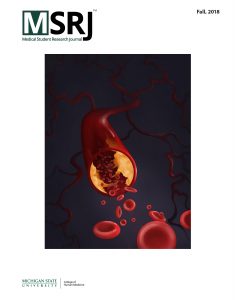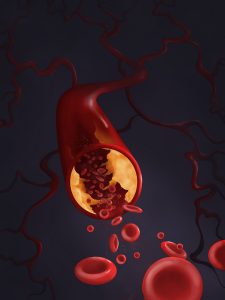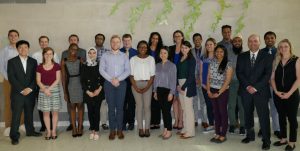Authors:
Alexander S. Roseman, M.D.1*, Hannah Thompson, M.D.1, Audrey Jiang, BS1, Lisa Obasi, BA1, Andrew M. Pattock, BS1, Jamie P. Schlarbaum, BS1, Daniel R. Wells, BS1, Andrew P.J. Olson, M.D.2,3
Author Affiliations:
1University of Minnesota Medical School, Minneapolis, MN, USA
2Department of Medicine, University of Minnesota Medical School, Minneapolis, MN, USA
3Department of Pediatrics, University of Minnesota Medical School, Minneapolis, MN, USA
*Corresponding Author: Alexander S. Roseman; alexander.rosemanMD@baystatehealth.org
Key Words: needs assessment; high utilization; super utilizers; high utilizers; academic medical centers
Abstract:
Background: A disproportionate amount of health care spending in the United States is attributed to a small subset of patients who employ inpatient and emergency department (ED) services. While patients with high ED utilization have previously been well- described, patients seen in an inpatient academic medical setting may differ with regard to demographics, medical conditions, and social factors.
Objectives: We aimed to characterize patients with high utilization in an academic inpatient setting for the purpose of identifying unmet needs.
Setting and Patients: Adults aged 18–80 were eligible for inclusion if they had more than three admissions to a general medicine service of an academic medical center within a large health care system. Patients who were admitted for pregnancy, oncology, trauma, or surgical procedures for acute conditions or were diagnosed with dementia or encephalopathy were excluded. Twenty-six patients met inclusion/exclusion criteria and were approached to be interviewed, of which 13 agreed to be interviewed. Measurements: Face-to-face administration of a self-reported survey assessing unmet needs regarding services for medical or mental health needs, access to health care, housing, transportation, or legal services, and any other barriers to health the respondent identified.
Results: All of those surveyed had health insurance and regular visits with primary care providers (mean 14 visits per 12 months). The most prevalent medical conditions identified were depression (85%) and chronic pain (77%). In addition, patients self-identified having an average of 2.2 chronic conditions. Financial struggles were common as 62% of the respondents reported annual incomes of <$12,000, and 77% were unemployed over the previous 12 months.
Conclusion: These results indicate unique clinical and social characteristics associated with high readmission rates at one academic medical center, suggesting the need for additional patient-centered research of this population to aid in the development of novel strategies to reduce over-utilization and improve health.
Published: Spring, 2019
References:
1. LaCalle E, Rabin E. Frequent users of emergency departments: the myths, the data, and the policy implications. Ann Emerg Med 2010; 56(1): 42–8. doi: 10.1016/j.annemergmed.2010.01.032
2. Harris LJ, Graetz I, Podila PS, Wan J, Waters TM, Bailey JE. Characteristics of hospital and emergency care super-utilizers with multiple chronic conditions. J Emerg Med 2016; 50(4): e203–14. doi: 10.1016/j.jemermed.2015.09.002
3. Statistical Brief #190. Healthcare Cost and Utilization Project (HCUP). May 2016. Agency for Healthcare Research and Quality, Rockville, MD. www.hcup-us.ahrq.gov/reports/ statbriefs/sb190-Hospital-Stays-Super-Utilizers-Payer-2012.jsp (accessed 10/14/2016)
4. Ronksley PE, Kobewka DM, McKay JA, Rothwell DM, Mulpuru S, Forster AJ. Clinical characteristics and preventable acute care spending among a high cost inpatient population. BMC Health Serv Res 2016; 16: 162–5. doi: 10.1186/ s12913-016-1418-2
5. Harris PA, Taylor R, Thielke R, Payne J, Gonzalez N, Conde JG. Research electronic data capture (REDCap) – a metadata-driven methodology and workflow process for providing translational research informatics support. J Biomed Inform 2009; 42(2): 377–81. doi: 10.1016/j. jbi.2008.08.010
6. Team RDC. R: A language and environment for statistical computing. 2017. Available from: http://www.r-project.org (accessed 08/1/2015)
7. Team Rs. RStudio: integrated development for R. RStudio, Inc. 2017. Available from: http://www.rstudio.com/ (accessed 08/1/2015)
8. Blank FS, Li H, Henneman PL, Smithline HA, Santoro JS, Provost D, et al. A descriptive study of heavy emergency department users at an academic emergency department reveals heavy ED users have better access to care than average users. J Emerg Nurs 2005; 31(2): 139–44. doi: 10.1016/j.jen.2005.02.008
9. Stockbridge EL, Suzuki S, Pagan JA. Chronic pain and health care spending: an analysis of longitudinal data from the Medical Expenditure Panel Survey. Health Serv Res 2015; 50(3): 847–70. doi: 10.1111/1475-6773.12263
10. Von Korff M, Lin EHB, Fenton JJ, Saunders K. Frequency and priority of pain patients’ health care use. Clin J Pain 2007; 23(5): 400–8. doi: 10.1097/AJP.0b013e31804ac020
11. Blyth FM, March LM, Brnabic AJM, Cousins MJ. Chronic pain and frequent use of health care. Pain 2004; 111(1–2): 51–8. doi: 10.1016/j.pain.2004.05.020
12. Hunt KA, Weber EJ, Showstack JA, Colby DC, Callaham ML. Characteristics of frequent users of emergency departments. Ann Emerg Med 2006; 48(1): 1–8. doi: 10.1016/j. annemergmed.2005.12.030
13. Mautner DB, Pang H, Brenner JC, Shea JA, Gross KS, Frasso 335 R, et al. Generating hypotheses about care needs of high
utilizers: lessons from patient interviews. Popul Health Manag
2013; 16(Suppl 1): S26–33. doi: 10.1089/pop.2013.0033; 10.1089/pop.2013.0033
14. Resources H, Administration S. State-level projections 340 of supply and demand for primary care practitioners:
2013–2025 about the National Center for Health
Workforce Analysis. 2016:2013–2025. Available from: http://bhw.hrsa.gov/healthworkforce/index.html [cited 11 February 2018]. 345
15. Williams BC, Paik JL, Haley LL, Grammatico GM.
Centralized care management support for ‘high utilizers’ in
primary care practices at an academic medical center. Care Manag J 2014; 15(1): 26–33.
16. Tourangeau R, Smith TW. Asking sensitive questions: the 350 impact of data collection mode, question format, and
question context. Public Opin Q 1996; 60(2): 275–304. doi:
10.1086/297751
17. Alonso A, Beunza JJ, Delgado-Rodriguez M, Martinez-
Gonzalez MA. Validation of self reported diagnosis of
hypertension in a cohort of university graduates in Spain.
BMC Public Health 2005; 5: 94. doi: 10.1186/1471-2458-5-94
18. Kriegsman DMW, Penninx BWJH, Van Eijk JTM,
Boeke AJP, Deeg DJH. Self-reports and general practitioner
information on the presence of chronic diseases in 360 community dwelling elderly. A study on the accuracy of
patients’ self-reports and on determinants of inaccuracy.
J Clin Epidemiol 1996; 49(12): 1407–17. doi: 10.1016/ S0895-4356(96)00274-0





